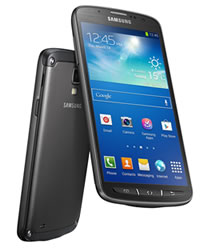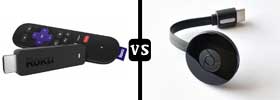Difference between Samsung Galaxy S4 Active and LG Optimus G Pro
Key Difference: Samsung announced that it has added a new phone to its lineup that combines the ruggedness of the older Samsung Xcover with the features and oomph of the new Galaxy S4. S4 Active is dust and water-proof. The phone comes with a 5-inch Full HD TFT capacitive touchscreen that differs from the AMOLED used in the S4. LG Optimus G Pro has major updates to its predecessor, the LG Optimus G. The device sports a massive 5.5-inch True Full HD IPS touch screen with multi-touch capability and a pixel density of 401 ppi. Under the hood, the phone is powered by 1.7 GHz Quad-core Snapdragon 600, making it pretty fast and speedy.
 Samsung announced that it has added a new phone to its lineup that combines the ruggedness of the older Samsung Xcover with the features and oomph of the new Galaxy S4. S4 Active is dust and water-proof and aims to provide direct competition to the Sony Xperia Z. The phone is aimed at the users that require their phone to be durable as well as provide extra features. According to the CEO and President of IT & Mobile Communications Division at Samsung Electronics, JK Shin, the phone is designed for the people who love the outdoors.
Samsung announced that it has added a new phone to its lineup that combines the ruggedness of the older Samsung Xcover with the features and oomph of the new Galaxy S4. S4 Active is dust and water-proof and aims to provide direct competition to the Sony Xperia Z. The phone is aimed at the users that require their phone to be durable as well as provide extra features. According to the CEO and President of IT & Mobile Communications Division at Samsung Electronics, JK Shin, the phone is designed for the people who love the outdoors.
Samsung Galaxy S4 Active shares many features with the S4, but differs in terms of design and aesthetics. The S4 Active is thicker and heavier at 151 grams; the weight is mostly because of the added water and dust proof. The phone has a diamond-pattern textured back that makes it easier to hold the device. The company has also removed the capacitive buttons and replaced them with hardware buttons. The top of the phone houses the 3.5mm headphone jack and has the words waterproof etched next to it. The top also houses the secondary mic and the IR emitter. The volume rocker is on the left side of the phone, while the right side has the power/lock key. The bottom of the phone has the microUSB / MHL 2.0 port that is sealed with a plastic flap. The proximity sensor, light sensor and the IR motion detector are placed on the front above the screen near the speaker. The back of the screen houses the camera and the LED flash.
The phone comes with a 5-inch Full HD TFT capacitive touchscreen that differs from the AMOLED used in the S4. It has ~441 ppi pixel density and is protected by corning gorilla glass 3. The phone is powered by 1.9 GHz Krait 300 Quad-core Qualcomm Snapdragon 600, has Adreno 320 GPU and 2GB RAM. The phone comes with Android 4.2.2 Jelly Bean. The TouchWiz UI changes certain Jelly Bean features offering users with more options. The lockscreen features new widgets such as displaying personal messages overlaid on photos from the TripAdvisor. The water ripples effect has been replaced by the lens flare effect, but can be switched or disabled completely. The lockscreen also offers multiple screen on which users can add widget. Another cool feature is the Quick Glance feature that uses a proximity sensor to detect nearby movement and automatically lights up to display time and notifications.
The company has replaced the 13 MP camera with an 8MP rear camera that as a capability to work underwater. The volume rocker can be changed into a temporary camera shutter button that allows users to click photos and record videos underwater. The hardware buttons are also provided for the same purpose. The phone offers 16 GB internal storage capacity of which around 11 GB is available to the user. However, the storage can be expanded by 64 GB using a microSD card.
The same amazing features that were offered in Galaxy S4 is available in the S4 Active; including gestures, hovering, air wave, smart play, smart scroll and many other fun features. The phone also comes with an Aqua Mode that can be applied to increase visual quality and clarity for enhanced underwater images. The company has also added certain helpful Samsung Apps including Samsung Hub, S Travel (Trip Advisor), S Health and S Translator that can translate as well as pronounce many different kinds of language. The camera also comes with many different features such as Drama Shot, Sound&Shot, Story Album and Group Play. However, it is unsure if the phone offers Dual Shot or Dual recording. The phone also comes with a IR blaster that can covert the phone into a remote.

The LG Optimus G Pro is the successor to the original LG Optimus G and resembles the Samsung Galaxy Note II in size and features. The phone has already been announced and launched in Korea, with launch date yet to be released for the rest of the world.
The LG Optimus G Pro has major updates to its predecessor, the LG Optimus G. The device sports a massive 5.5-inch True Full HD IPS touch screen with multi-touch capability and a pixel density of 401 ppi. The screen is truly amazing in viewing and the bigger screen is perfect for multi-purpose use (things people usually whip out their tablets or laptops for). The high resolution ensures crisp and sharp images, while the phone has great viewing angles. The large screen also ensures that the device is hard to hold and function with one hand. The G Pro has a sleek plastic chassis, which makes it a slippery when trying to maneuver single-handedly. However, the plastic chassis does not make the phone weak; in fact it is very resilient. LG has made it a bit easier by placing the power and the volume buttons on the right side of the device, rather than placing the power button on the top. Operating the phone requires the person holds the phone in one hand and operates using the other.
Under the hood, the phone is powered by 1.7 GHz Quad-core Snapdragon 600, making it pretty fast and speedy. The device can handle running multiple operations as well as high-res games, without major glitches. The device offers internal memory capacity of 32 GB, which can be expanded further using the microSD slot by 64 GB. The device provides 2 GB worth of RAM, decreasing the lagging effect when running too many apps. The device comes with an NFC, Infrared port, USB and Wi-Fi hotspot capability. The Infrared port ensures that the phone can be made into a remote for any supporting device, while the hot-spot allows the person to share internet with others.
The device houses a 13 MP primary camera for picture taking that supports 4208 x 3120 pixels, and a 2.1 MP secondary camera for video conferencing or calls. The camera is pretty decent in terms of taking hi-res, sharp photos, however, according to The Verge review; the camera has a tendency of washing out colors from the images. The huge viewfinder on the device is great for taking images. Both the cameras have the ability to take videos at 1080p@30fps. One pretty nifty feature on the phone is the Dual-recording feature (similar to the one on the S4), which allows the user to record videos simultaneously from both of the camera. Another feature that is boasted by the company is the Virtual Reality Panorama shot that allows the user to take images and stitch them together for 360 degree panorama shots (this feature is very similar to the Photo Shoot on the Nexus 4).
The device houses a massive Li-Po 3140 mAh battery that is removable, a must feature for many smartphone lovers. The company has yet to release the official data about the Talktime and the Stand-by time offered by the phone. LG has also added the QSlide apps and the QButton feature on the phone. The QSlide apps are widgets that allow the user to do multiple jobs on the same screen, such as take notes, see the calendar, check e-mail and can also allow the user to watch a video and text at the same time. A similar feature is available in the Note II, but it the system only allows the user to access limited apps on the phone. The QButton located on the left side of the device allows the user to access any apps on the phone by pressing the button. The device is yet to hit other shores and prices will also be announced accordingly with the release dates.
The information for the detailed table about the two phones has been taken from Samsung Press website, theverge.com, engadget.com and GSMArena.com.
|
|
Samsung Galaxy S4 Active |
LG Optimus G Pro |
|
Launch Date |
Q3/2013 |
Q2/2013 |
|
Company |
Samsung |
LG |
|
Size |
139.7 x 71.3 x 9.1 mm |
150.2 x 76.1 x 9.4 mm |
|
Display |
5-inch Full HD TFT capacitive touchscreen |
5.5 inches True Full HD IPS Plus LCD capacitive touchscreen |
|
Screen |
1080 x 1920 pixels (~441 ppi pixel density) 16M colors |
1080 x 1920 pixels (~401 ppi pixel density) |
|
Protection |
Corning Gorilla Glass 3 |
N/A |
|
Weight |
151 grams |
172 grams |
|
2G Network |
GSM 850 / 900 / 1800 / 1900 |
GSM 850 / 900 / 1800 / 1900 |
|
3G Network |
HSDPA 850 / 900 / 1900 / 2100 HSDPA 850 / 1900 / 2100 |
HSDPA 900 / 2100 |
|
4G Network |
LTE 800 / 850 / 900 / 1800 / 2100 / 2600 LTE 700 MHz Class 17 / 850 / 1700 / 1900 / 2100 - SGH-I537 |
Depends on market availability |
|
GUI |
TouchWiz UI |
LG Optimus UI |
|
CPU speed |
1.9 GHz Krait 300 Quad-core |
1.7 GHz Quad-core Snapdragon 600 |
|
GPU |
Adreno 320 |
Adreno 320 |
|
OS |
Android OS, v4.2.2 (Jelly Bean) |
Android v4.1.2 (Jelly Bean) |
|
Chipset |
Qualcomm APQ8064T Snapdragon 600 |
Qualcomm APQ8064T Snapdragon 600 |
|
RAM |
2 GB |
2 GB |
|
SIM Size |
microSIM |
microSIM |
|
Internal Memory |
16 GB (Approximately 11.25 GB available to user) |
32 GB |
|
Expandable Memory |
Up to 64 GB |
Up to 64 GB |
|
Sensors |
Accelerometer Sensor, Proximity Sensor, Gyro Sensor, Digital Compass, Barometer Sensor, Gesture Sensor, Finger Hovering Sensor, Light Sensor |
Accelerometer, gyro, proximity, compass |
|
Connectivity |
Wi-Fi ac, Wi-Fi Direct, IrDA, NFC, USB 2.0, Bluetooth® 4.0 (LE), USB-On-the-go, USB Host, DLNA, Wi-Fi hotspot |
2G, 3G, 4G, Wi-Fi, Bluetooth, NFC, Infrared port, DLNA, Wi-Fi hotspot, USB, USB Host. |
|
Data |
GPRS, EDGE, WLAN, Bluetooth, NFC, Infrared port, USB |
GPRS, EDGE, WLAN, Bluetooth, NFC, Infrared port, USB. |
|
Speed |
HSDPA, 42 Mbps; HSUPA, 5.76 Mbps; LTE, Cat3, 50 Mbps UL, 100 Mbps DL |
HSDPA, HSUPA, LTE |
|
WLAN |
Wi-Fi 802.11 a/b/g/n/ac, dual-band, Wi-Fi Direct, DLNA, Wi-Fi hotspot |
Wi-Fi 802.11 a/b/g/n/ac, dual-band, Wi-Fi Direct, DLNA, Wi-Fi hotspot |
|
Bluetooth |
Bluetooth v4.0 with A2DP, EDR, LE |
Bluetooth v4.0 with A2DP |
|
USB |
microUSB v2.0 (MHL 2), USB On-the-go, USB Host |
microUSB v2.0 (MHL), USB Host |
|
Primary Camera |
8MP 3264 x 2448 pixels |
13 MP, 4208 x 3120 pixels |
|
Secondary Camera |
2 MP,1080p@30fps, dual video call |
2.1 MP, 1080p@30fps |
|
Video |
1080p@30fps, dual-video recording |
1080p@30fps Dual-video recording HDR |
|
Camera Features |
|
|
|
Sound Enhancement |
Active noise cancellation with dedicated mic |
Dolby mobile sound enhancement |
|
Audio supported formats |
MP3, AAC, AAC+, eAAC+, WAV, AMR-NB, AMR-WB, MIDI, OGG, IMY, XMF, WMA, FLAC |
MP3/ WMA/ WAV/ FLAC/ eAAC+/ AC3 player |
|
Video supported formats |
MPEG4, H.263, H.264, DivX4, VP8, WMV9, WMV 7/8, MP43, Sorenson Spark |
MP4/ H.264/ H.263/ WMV/ DviX player |
|
Battery Capacity |
Lithium-ion 2,600 mAh battery |
Removable Li-Po 3140 mAh |
|
Talktime |
No official data released |
No official data released |
|
Standby Time |
No official data released |
No official data released |
|
Available Colors |
Urban Grey, Dive Blue, Orange Flare |
Black, White |
|
Messaging |
SMS(threaded view), MMS, Email, Push Mail, IM, RSS |
SMS(threaded view), MMS, Email, Push Mail, IM, RSS |
|
Browser |
HTML5 |
HTML5, Adobe Flash |
|
Radio |
N/A |
Stereo FM radio with RDS |
|
GPS |
GPS with A-GPS support and GLONASS |
GPS with A-GPS support and GLONASS |
|
Java |
via Java MIDP emulator |
Java MIDP emulator |
|
Additional Features |
|
|









Add new comment